VIKING HOARD
Circa 800 - 1100 A.D.
Silver
2 - 5 cm high
0.5 - 5 cm wide
Provenance:
Private collection 1970s-1990s,
Collection of Prince Saud bin Muhammed Al Thani (1966 – 2014); Thence by descent.
£2,650
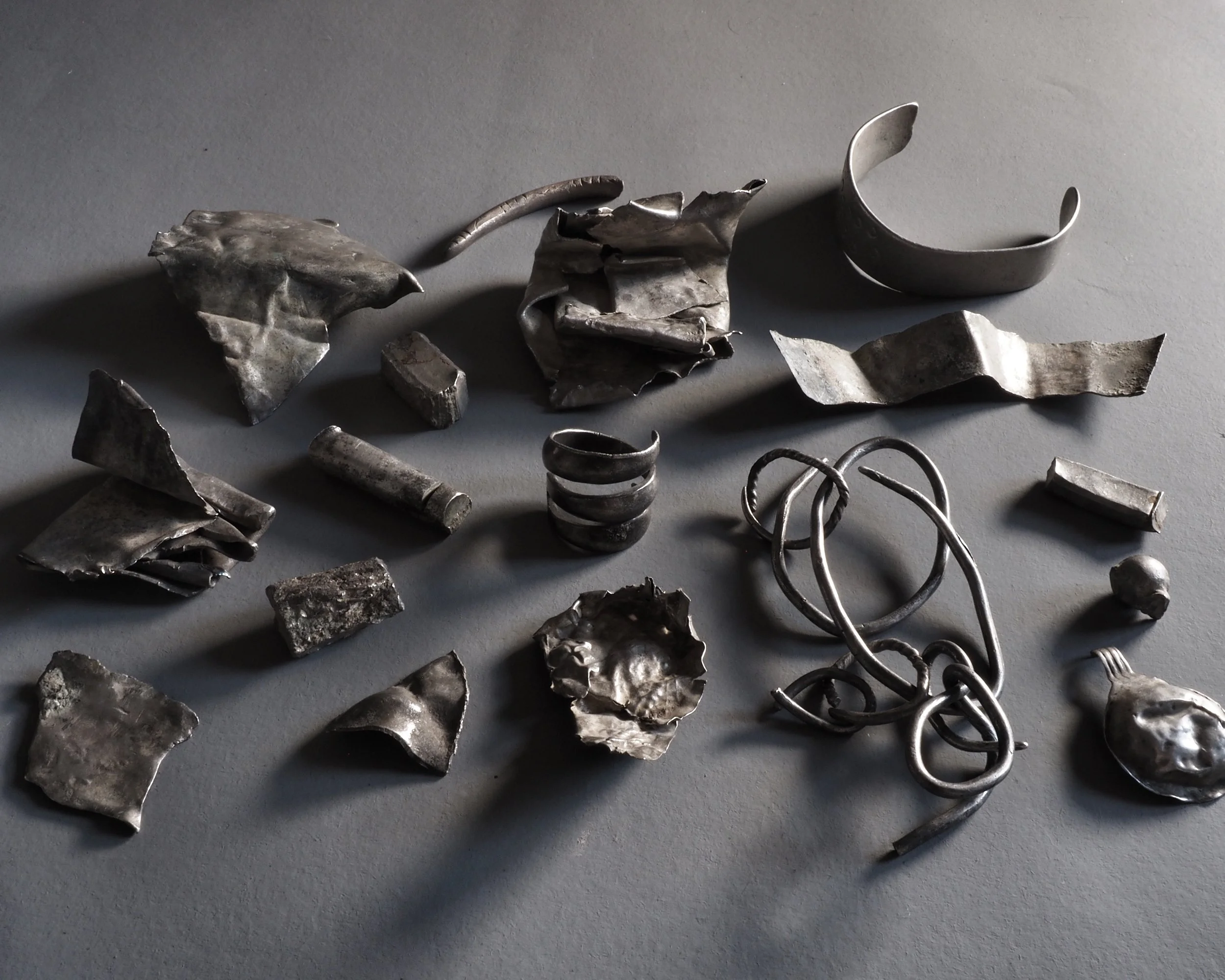
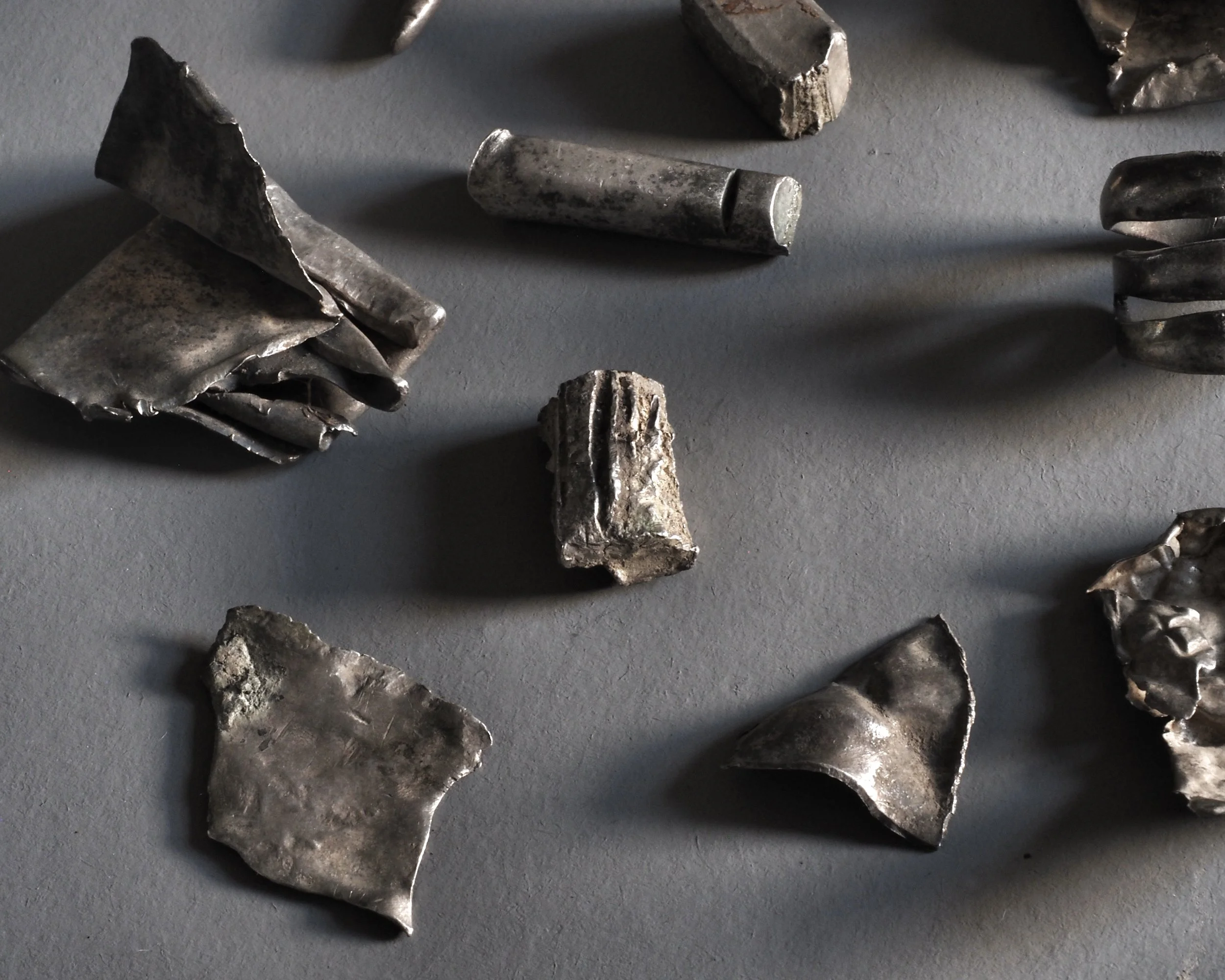
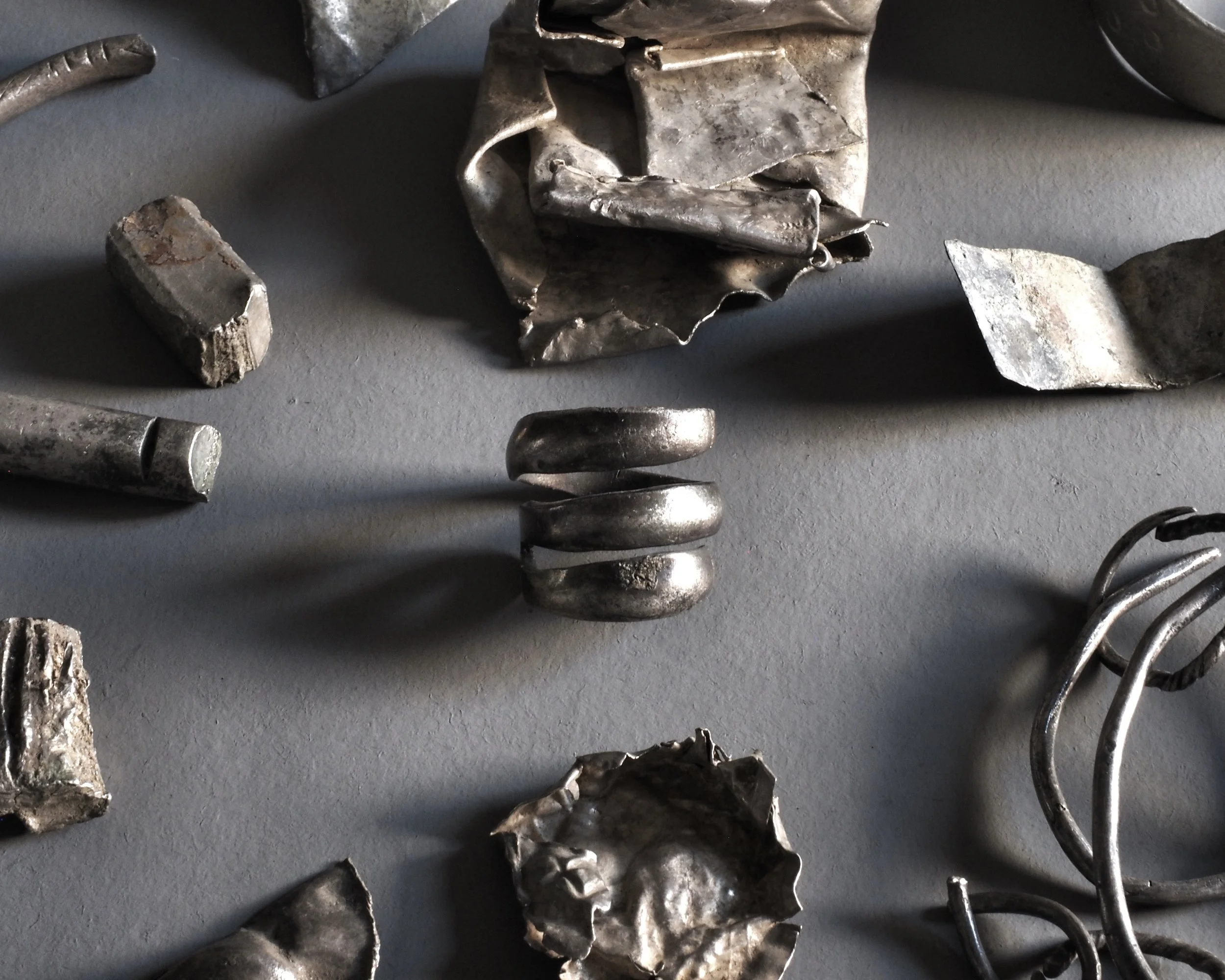
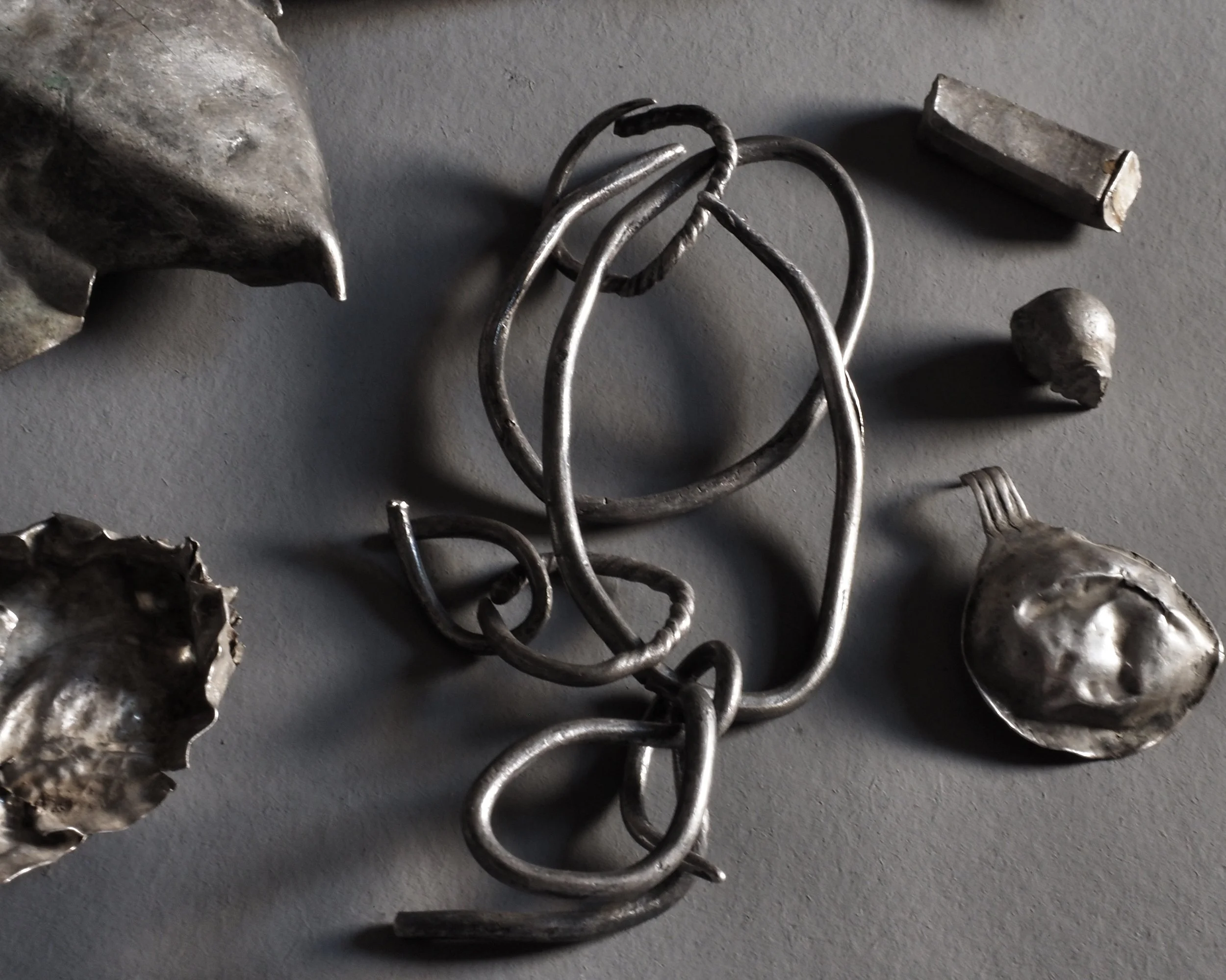
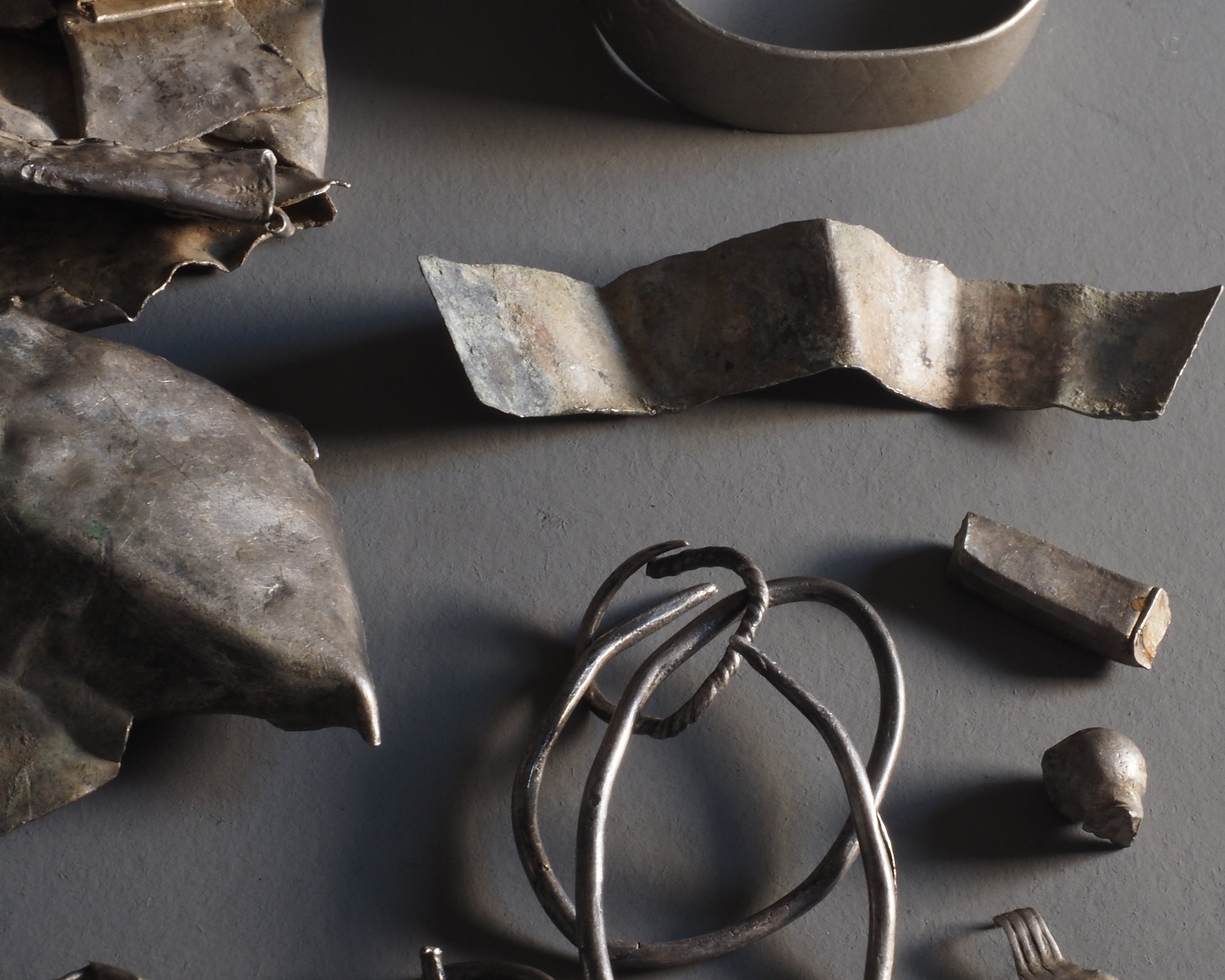
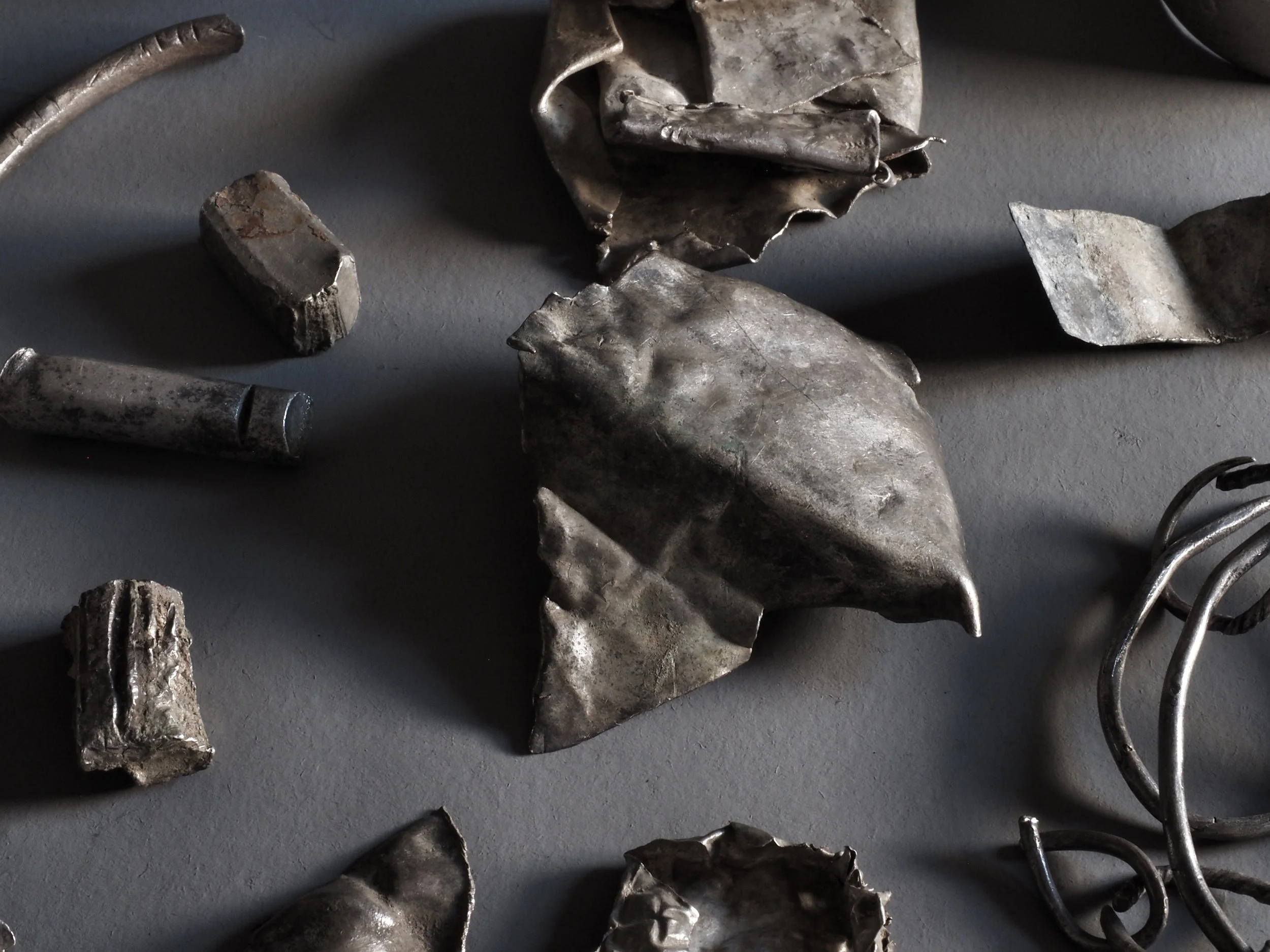
This highly sculptural, rare and extensive collection of Viking silver artefacts could be considered an archaeological treasure.
As is often the case with such hoards, a number of the items are fragmentary, a mix of various cut and bent pieces of bracelets, rings, pendants, beads, and ingots. Groups of such objects are called ‘hacksilver’ because they were sometimes re-used as a currency that was valued by weight, during the later Middle Ages. It was also a common practice among the Vikings themselves, as a result of both their raiding and trade across Europe. The practice may have been employed much earlier by the Romans, in their dealings with Pictish tribes (as is believed to be the case with the 4th / 5th century hoard of Traprain Law).
Viking-era hoards typically include a mixture of hacksilver, coins, ingots and complete small pieces of jewellery. The Vale of York hoard includes 617 silver coins and hacksilver, whilst the famed Cuerdale hoard includes 8,600 items, silver coins and hacksilver. Interestingly, the Russian ‘ruble’ is derived from the Russian verb ‘rubit’, meaning “to chop”, from the practice of the Rus’, described by Ahmad ibn Fadlan visiting the Volga Vikings in 922 A.D.
The 'Viking-Age’ is a catch-all term for the early medieval nordic world and the word ‘Viking’ comes from the Old Norse word ‘Víkingr’ - which meant raider. Famously, in 793 A.D., Norsemen in longships raided the monastery of Lindisfarne on the Northumberland coast, murdering the priests and plundering the valuable ornaments. It was a brutal raid that was described in the Anglo Saxon Chronicle as “Heathen men wretchedly destroying God’s church on Lindisfarne, with plunder and slaughter.” This is generally acknowledged as the beginning of the 'Viking-Age' in the British Isles, despite a brief foray of 3 ships of Danes arriving on the Dorset coast in 789 A.D.
The Cuerdale Hoard, Preston, Lancashire, England, Viking, 9th century - 10th century A.D. Silver, British Museum, London (1841,0711.407)

